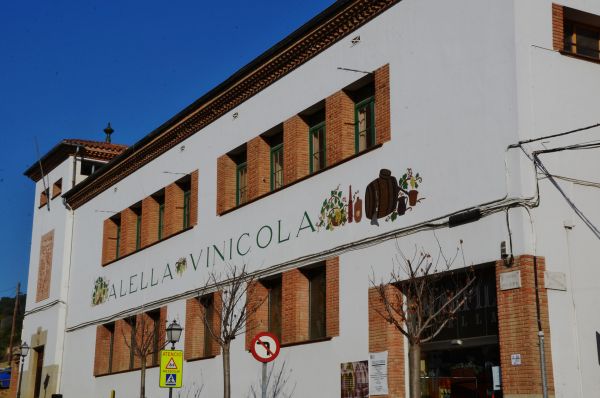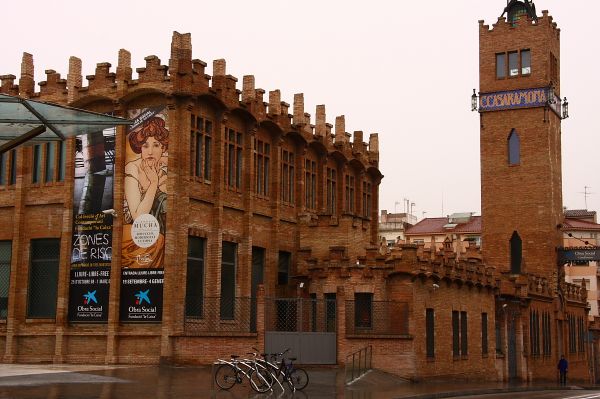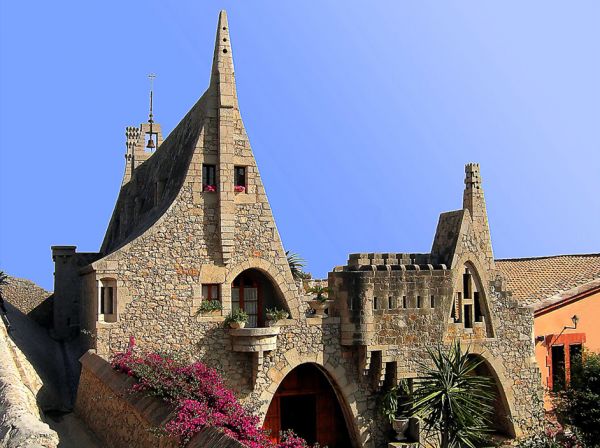We start the route in
Arenys de Mar, at the
Mollfulleda destilleries, known as the "Calisay factory".
It was founded in 1896 by the emigrant
Magí Mollfulleda who, after buying the formula invented by the
Benedictine monks from a French citizen, devoted the building to producing this well-known liquor. The façades are inspired by popular architecture and contain numerous Neo-Gothic and Neo-Romanesque elements.
In
Alella we find the
Sindicat Alella Vinícola (Alella Wine production Union). Work of the architect
Jeroni Martorell, it was designed in 1906 and has numerous balanced arches and skylights on the roof to allow the light in.
In
Badalona we make an obligatory stop: the
Anís del Mono factory, erected by the Bosch brothers. Located right next to the beach, the factory was originally a modest "fassina" (distillery) where anise was produced; the current building is the result of alterations carried out in 1922 by the architect
Agustí Domingo i Verdaguer, who incorporated some Modernista elements.
MODERNISM AND CULTUREIn
Barcelona, fans of
Modernisme can see the best-known residential buildings: the
casa Batlló, the
Pedrera and the
casa Amatller are just a few examples. But in the city you can also find old factories converted into cultural centres: the
Casaramona factory (CaixaFòrum),
Can Framis (art gallery and exhibition rooms) and the
Vapor Vell, converted into the Municipal Library.
THE WINE ACTIVITY OF THE GÜELL FAMILYHeading south; between
Garraf and
Sitges, we will find the
Cellers Güell, designed by
Antoni Gaudí. In 1872
Eusebi Güell purchased the estate of medieval origin, to use it for the cultivation of the vine and wine production. The building had two floors for the winery located in the basement and, on ground level, the garage, warehouses, temporary housing and the Güell family chapel.
Our route ends at the
Can Pujol winery of
Vilanova i la Geltrú; designed in 1935, inside you can see the ancient and wide nave that contained the distillery and the cellars with the underground wine presses, which date back to the 18th century.
Have we managed to inspire you? If you have any other interesting suggestions please send them to us on Facebook or publish your photos on Instagram with the hashtag #patrimonicultural. 


